NORTH WALES COAST RAILWAY:NOTICE BOARD
Rheilffordd arfordir gogledd Cymru: Hysbysfwrdd
31 August 2020





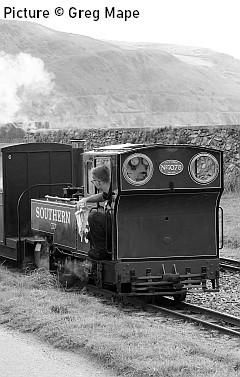
Forthcoming events
(see also our Calendar page for venues)
Note: we have removed all entries relating to meetings as the events are cancelled.
The Clwyd Railway Circle has informed us that all their dates for the 2020=21 season, previously listed here, have now been suspended.
September 2020
Saturday 5 September Steam at Chester 'The Cheshireman' (Railway Touring Company). Norwich to Chester. Loco 6233 for part of the journey.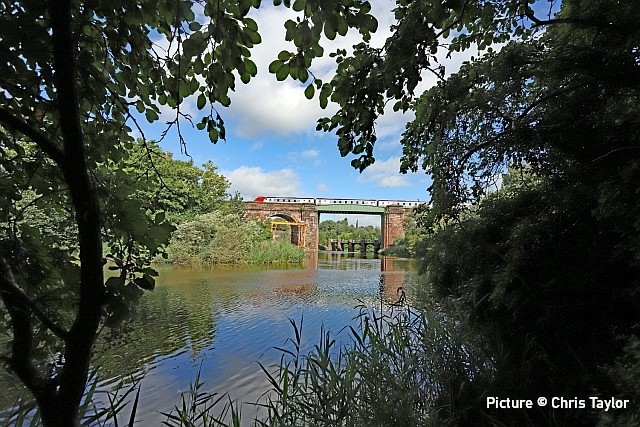
A Voyager crossing the River Dane, Northwich on 20 August with the 09:38 Crewe to Holyhead, diverted due to bridge work near Crewe. The train was also terminated at Bangor due to a bridge strike. Picture by Chris Taylor.
Transport for Wales has now applied the policy change already applied by English operators to rescind the 'essential travel only' rule: here's a message from Kevin Thomas, Chief Executive Officer. But of course we should be sure to take care, keep away from other passengers, and wear a face-covering at all times when on the railway.
Coast scenes - by Peter Laithwaite
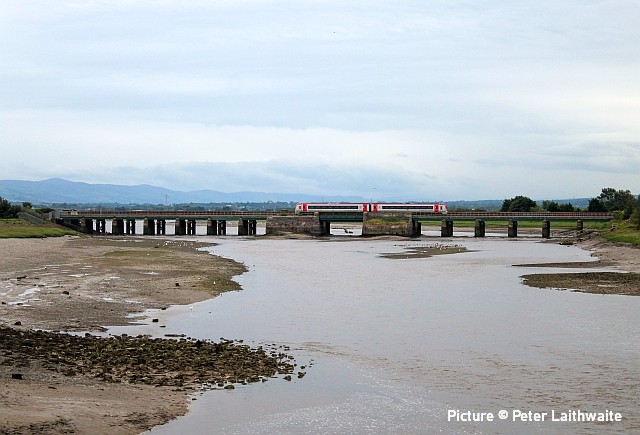
Three images from 27 August. Above. A Transport For Wales 175 DMU passes over The River Clwyd on the outskirts of Rhyl in North Wales running as 1V97 Holyhead to Shrewsbury.
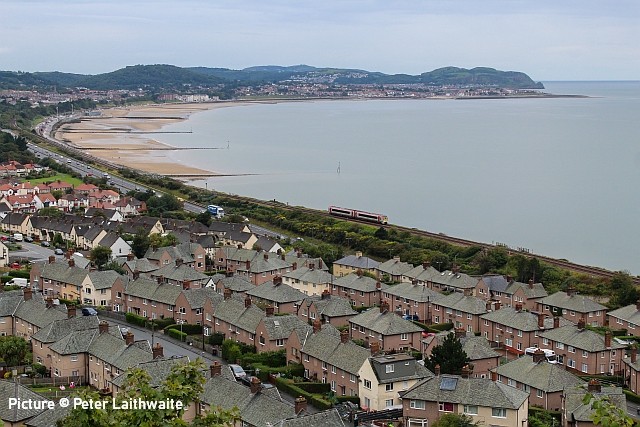
Transport For Wales 175 DMU works train 1H89 Holyhead to Manchester Piccadilly photographed at Old Colywn.
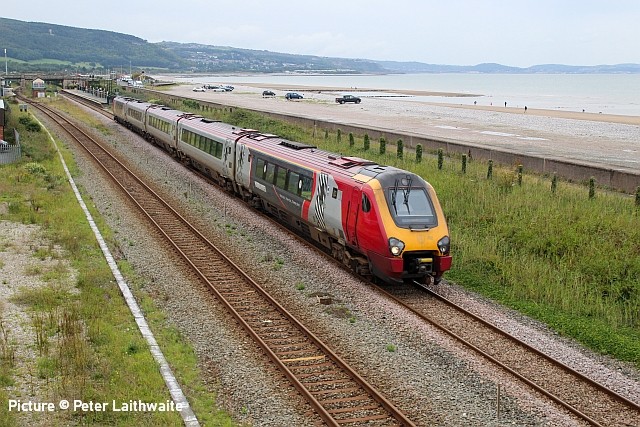
Avanti West Coast train 1A48, 13:58 Holyhead to Crewe, at Abergele & Pensarn, worked by Bombardier-liveried 221 142.
Clock Face - continued
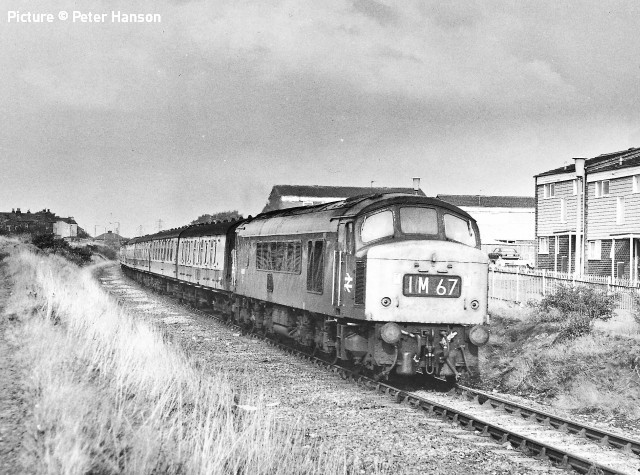
Further to the items about the Clock Face route inspired by David Pool's picture from 1979, Peter Hanson writes 'the line was regularly used for Sunday engineering diversions and during the week for trains carrying cars from the car factories at Speke. The picture shows 46 053 with the diverted 09:40 Newcastle to Liverpool at the south side of Clock Face on Sunday 19 October 1978. I have also seen the Swindon built Trans Pennine unit for Hull routed this way.
As confirmation of the route taken by these diversions, I managed to obtain from the Manchester Locomotive Society archive the Special Traffic Notice for 13 May 1979, the date of David's picture. This reveals that only locomotive-hauled diverted services needed to go via the long Ince Moss Junction to Bamfurlong Junction; diverted trains worked by DMUs would reverse at Sutton Oak and use the north to east curve which did exist there to reach the main line.
Some points arise about our previous item. Firstly, the former passenger service on the route served Widnes South station, which closed in 1962, not Widnes Central as we originally wrote. Also, the Adlestrop Map we used to illustrate the route shows a link for westbound trains on the main line at St Helens Junction to southbound the southbound line to Appleton and Widnes. This chord never existed, although there were a lot of sidings there serving an LNWR works; cartographer Richard Fairhurst assures us he will remove it.
Miscellany
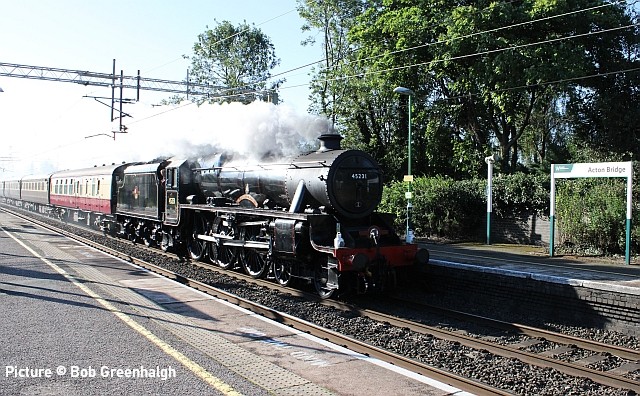
Observers at Acton Bridge station in the morning of 29 August were treated to the sight and sound of two 'Black 5' locos. 45231 Sherwood Forester (above) passed at 08:54 on a charter train run by Locomotive Services from Crewe to Carlisle. Thanks to the fact that the company has now permitted Real Time Trains to show locomotive allocations, we can tell you that 47 805 was on the other end of the train.
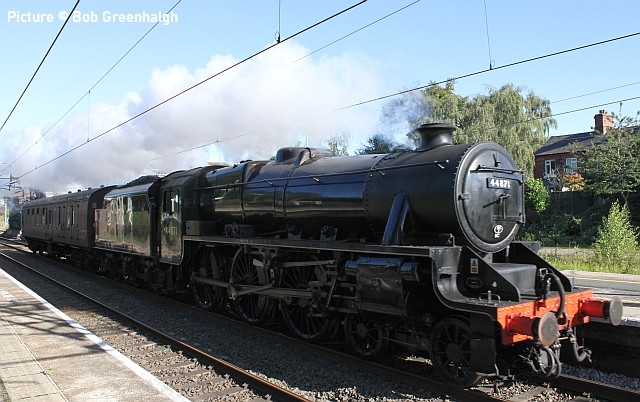
At 09:22, 44871 passed Acton Bridge, in the process of transfer with its support coach from the East Lancashire Railway to Crewe. West Coast are so far not tempted to release loco information, so this working is labelled by 'RTT' with the default description of diesel hauled, and a load of 106 tonnes (!). From Crewe it continued to Bristol, sandwiched by two Class 47 diesels which came from Carnforth, and the next day, 30 August, hauled a 'Royal Duchy' excursion from Bristol to Plymouth and Par.
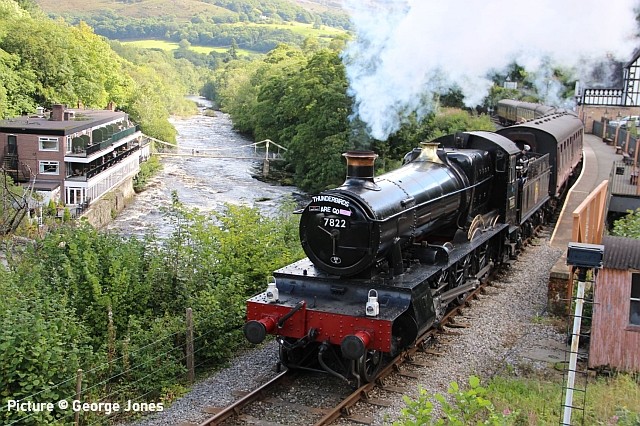
7822 Foxcote Manor returned from a short visit to the West Somerset Railway on 28 August and was quickly prepared for the weekend service trains at Llangollen. On Saturday 30 August it was seen passing Berwyn with the 10:40 Llangollen to Carrog with a 'Thunderbirds are Go' headboard including a reproduction of a Virgin Trains 'Scott Tracy' nameplate. The loco should run on steam days between 29 August and Mid-October. Picture by George Jones. Some good news is that the Llangollen Railway, like a number others, has been granted funds (£161,000 in this case) from the National Lottery Heritage Fund to help them through the winter.
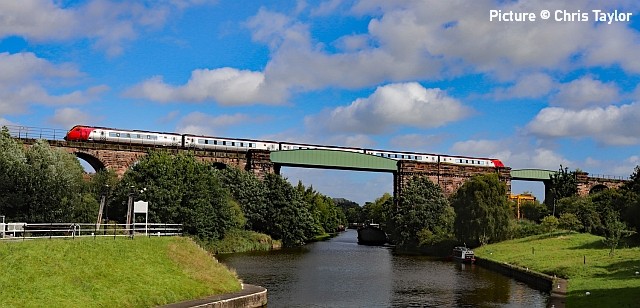
The second diverted Crewe - Holyhead train on 20 August crossing the Weaver Navigation at Hunt's Locks on the Northwich Viaduct (Chris Taylor).
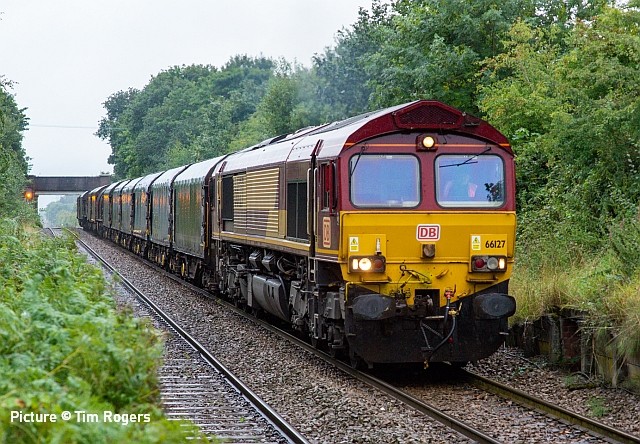
On 27 August, 66 127 hauling the twelve wagons of 6M86 10:27 Margam T.C. to Dee Marsh, seen at rather wet Buckley (Tim Rogers).
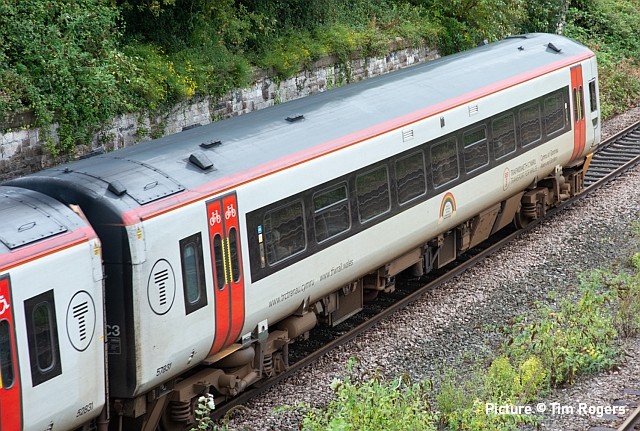
On 28 August, 158 831 leading the 1L18 11:47 Holyhead to Birmingham International, seen departing Llandudno Junction, features on car 57831 the 'support the NHS' rainbow, not to be confused with the Pride stripes as currently seen on Avanti Pendolino 390 119, or the rainbow bands worn by the winner of the World Cycling Championship.
Cambrian Corner
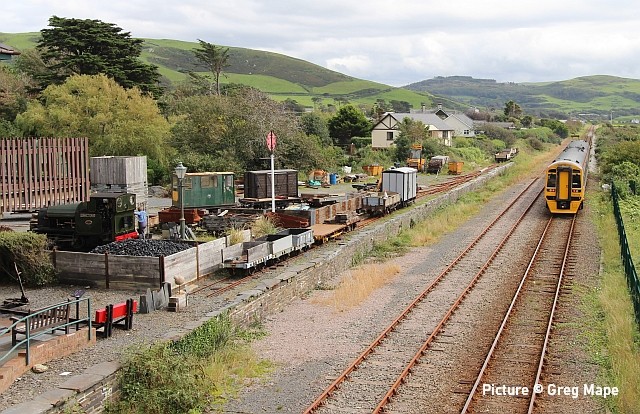
On 24 August 158 829 approaches Tywyn station with the Pwllheli portion of the 10:08 from Birmingham International, as Talyllyn Railway loco Edward Thomas is being attended to, no doubt as part of the preparations for the re-start of public services on Saturday 1 September. Picture by Greg Mape.
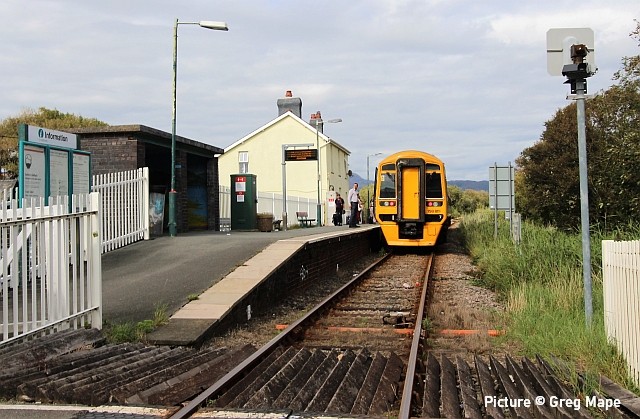
158 819 departs from Fairbourne towards Pwllheli at 15:45. The old station-master's house appears to be in good hands. Fairbourne's residents, and those of nearby Arthog, will be among those most affected by the forthcoming closures of Barmouth viaduct; the 13-minute train ride to Barmouth will be replaced by a bus journey of around 18 miles via Dolgellau (Greg Mape).
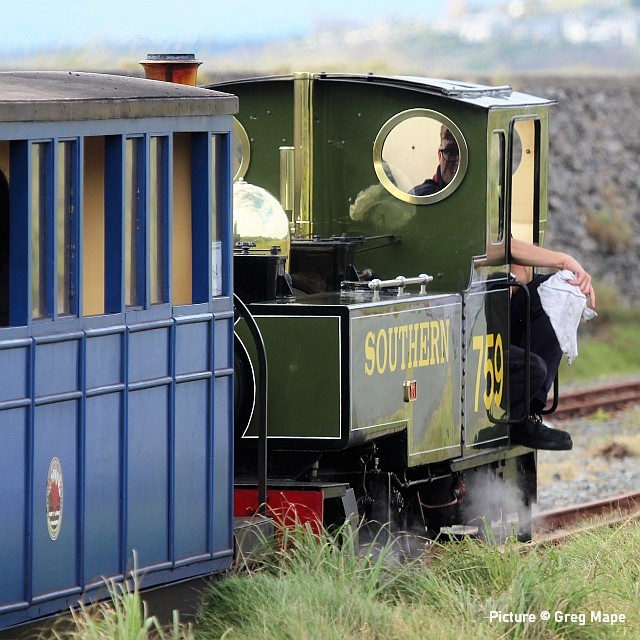
The 12¼ inch gauge Fairbourne Railway is already operating since 18 July. On 24 August the scaled-down replica of Lynton and Barnstaple loco Yeo was in operation (Greg Mape).
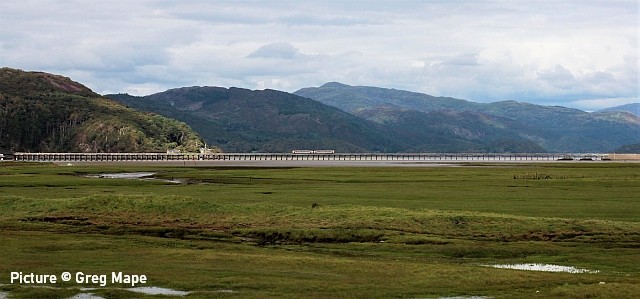
A Barmouth viaduct panorama (Greg Mape)
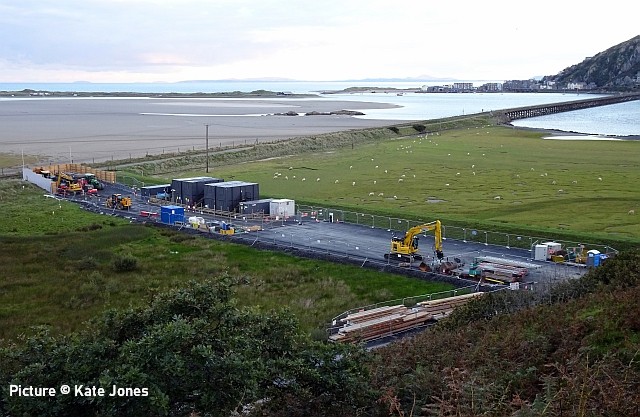
A view on 30 August by Kate Jones of the works compound for the Barmouth viaduct. Work is on-going on the underneath of the viaduct while the bridge is
still open.
Looking back: Ireland 1968 - with David Pool
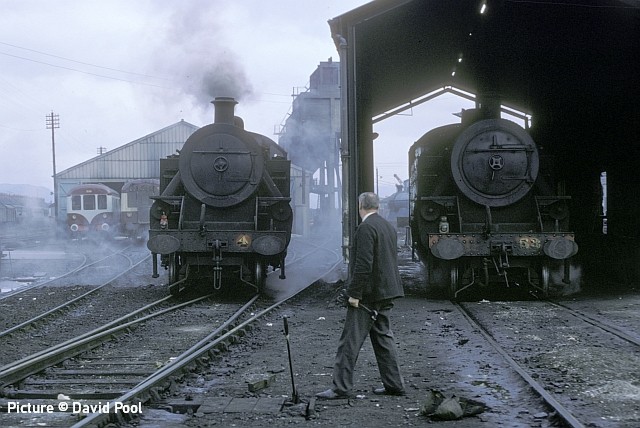
The end of BR steam in 1968 made me realise that time was running out for steam in Ireland, and I should make a visit before it was too late. After crossing from Stranraer to Larne I headed for Belfast York Road, where a friendly Shed Foreman was happy for me to photograph withdrawn and active steam locomotives. On 30 August 1968 two “Jeeps” Nos 4 and 53 were on shed, being used on the spoil trains from Magheramorne Quarry to Belfast, where a Motorway was under construction. No.4 is a Derby built WT Class 2-6-4T, and is now preserved at Whitehead, County Antrim.
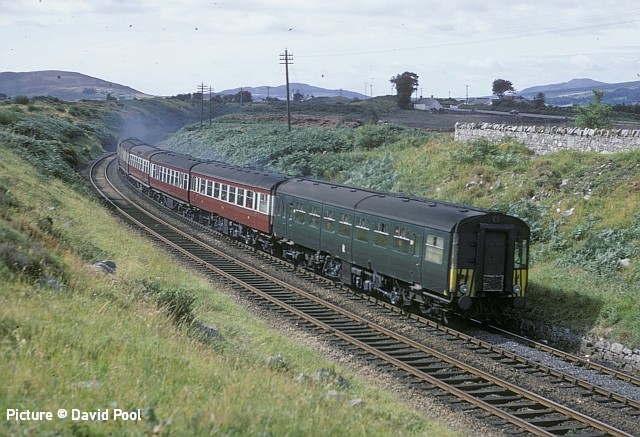
On the main line between Belfast and Dublin later that day, I found a good location for photographs a few miles South of Newry, .near the Border at Killeen. The “Enterprise” was the prestige train on the line, worked jointly by NIR and CIE with their own stock. First to pass was the 1100 from Dublin, formed by a pair of ex Great Northern railcars, four passenger coaches and another pair of railcars on the rear. The leading railcar was 129 in the green GNR livery. At that time NIR had no passenger diesel locomotives suitable for these trains, after the withdrawal of the famous V Class compound steam 4-4-0s.
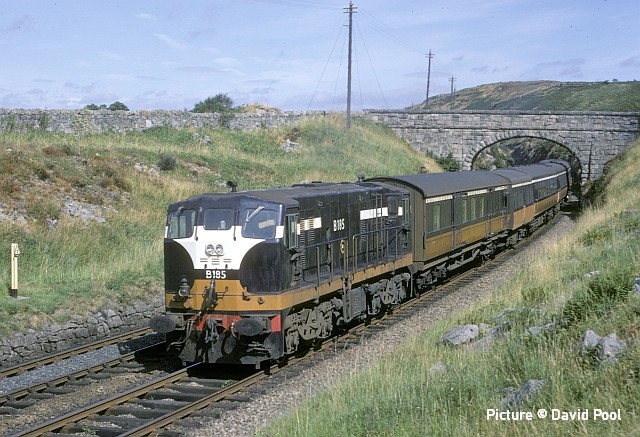
The “Enterprise” leaving Belfast at 1130 was a CIE train, and headed by 181 Class B185, built in 1966 by General Motors. These were the most powerful modern CIE diesels until the 071 class appeared in 1976, the older A Class diesels having been relegated to secondary duties. Twelve of the 181 Class locomotives were built, and one has been preserved.
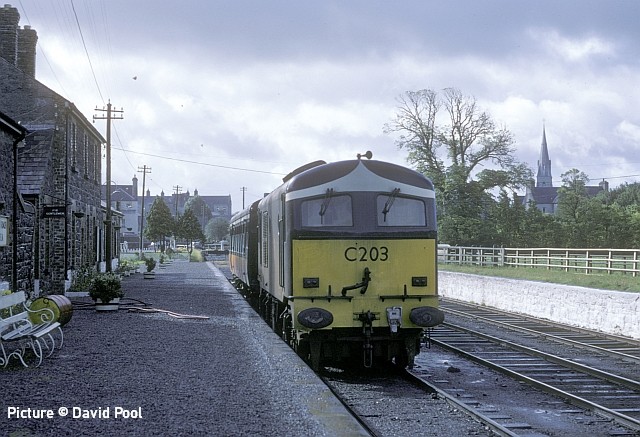
The branch from Attymon Junction to Loughrea in County Galway was not likely to survive long, and visiting Loughrea on 31 August 1968 the branch train comprised diesel C203 and a single coach. C203 was built by Metropolitan Vickers in 1956 with a Crossley engine. I later photographed it at Dunsandle, making a smoky departure, and it was not surprising that eventually these locomotives were rebuilt by CIE with General Motors diesel engines. The branch was closed in 1975.
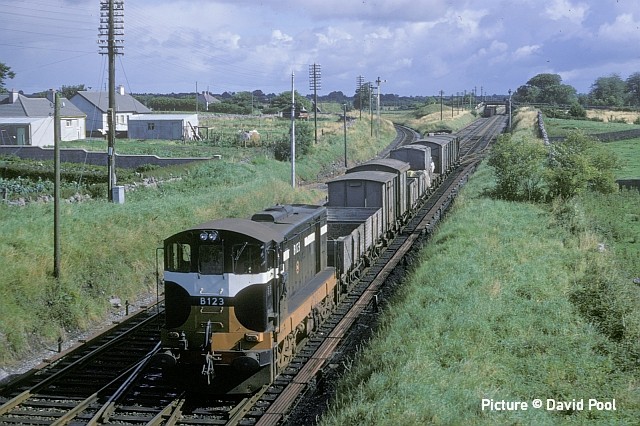
Moving on to Athenry, a freight from Dublin to Galway was approaching, hauled by a single-cab 121 Class B123, built by General Motors. The assortment of wagons was typical of CIE freights at the time, but these are now just memories, with the few remaining freight workings today being mostly bulk flows of containers and zinc ore, plus some timber. The single track coming in on the left is from Claremorris, and was eventually closed, passenger services having been reduced to one train per day between Ballina and Limerick. This line is now part of the Western Rail Corridor reopening scheme, but no funds are yet available for the section between Athenry and Claremorris.
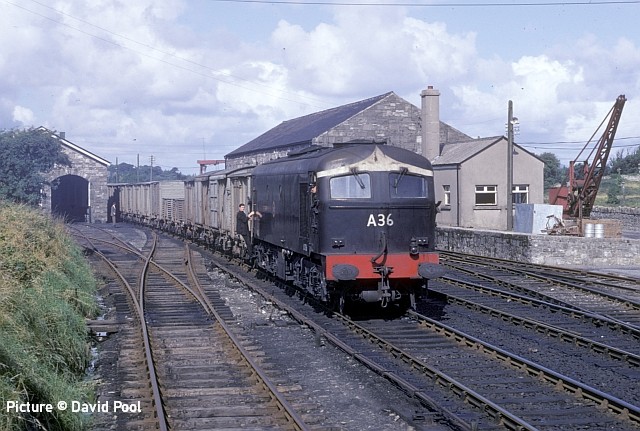
On 3 September 1968 I was in Westport, County Mayo, where A Class A36 was carrying out some shunting. The A Class locomotives had been built by Metropolitan Vickers, and had the troublesome Crossley engines. As with the C Class, the A Class locomotives were also later rebuilt by CIE with General Motors engines, the A Class being then renumbered with an “R” suffix. The black livery was standard for CIE diesels in the early 1960s.
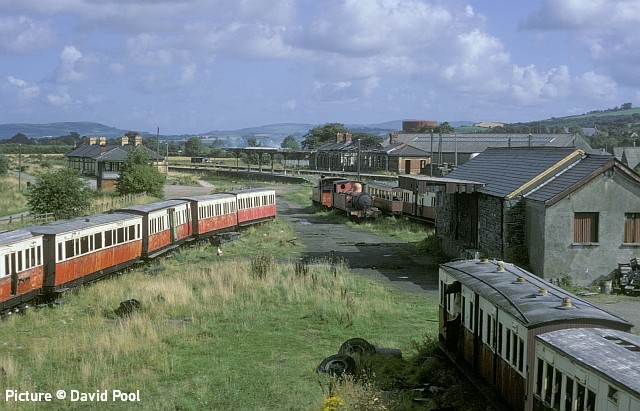
Strabane was the station on the Great Northern line from Omagh to Londonderry which provided an interchange with the narrow gauge County Donegal Joint Railway. When I arrived at Strabane on 6 September 1968 I was not prepared for what I saw. The tracks had disappeared, but the narrow gauge rolling stock and the station buildings were little changed since the closure in 1960. There were also two 2-6-4T locomotives, CDJR Nos. 4 and 5, both of which have now survived in preservation.
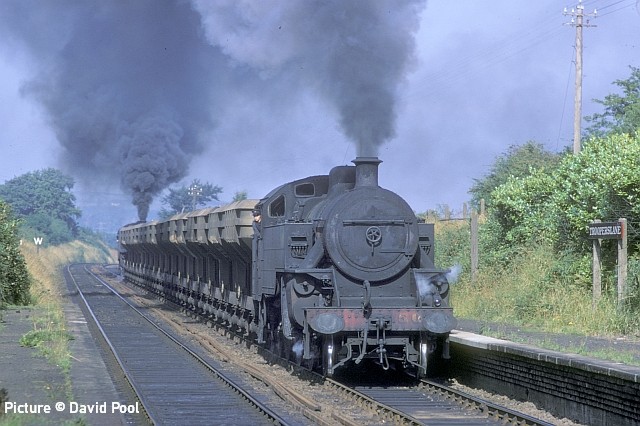
The following day 7 September 1968 was the last day of my visit, and my last chance to photograph the spoil trains. Troopers Lane station was on a rising gradient for loaded trains working to Belfast, and WT Class Nos. 50 and 53 were top and tailing the train. What better way to remember Ireland in 1968?
Statfold enthusiasts' day 9 August - report by Jim Ikin
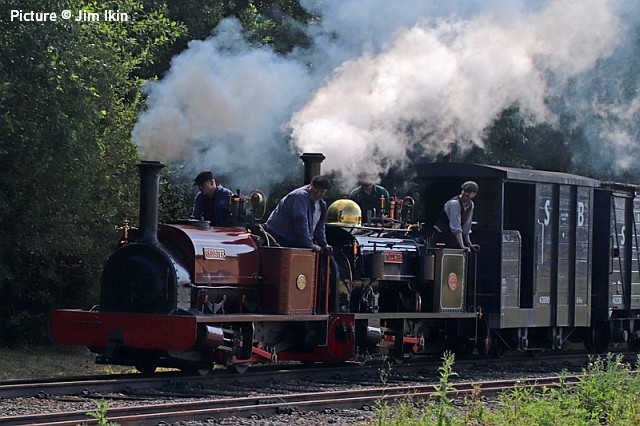
Everything at the Statfold Railway was very well organised and as safe as could be in the present climate;the original one-day enthusiasts day (originally booked for March) was split over two days to enable social distancing and a track and trace system was in place. Here is a selection of locos with North Wales connections. Above: Ex-Dinorwic and Penrhyn quarries respectively are Hunslets Cloister of 1891 and Sybil Mary of 1906.
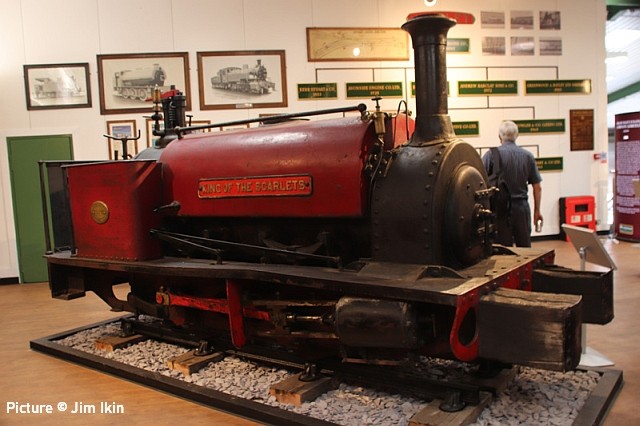
Dinorwic Hunslet King of Scarletts of 1889.
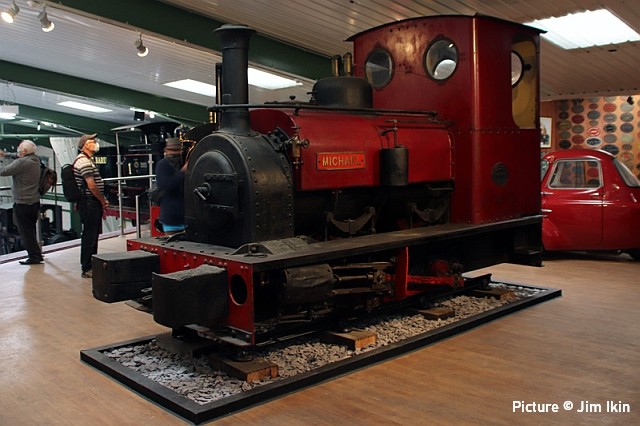
Dinorwic Hunslet Michael of 1932.
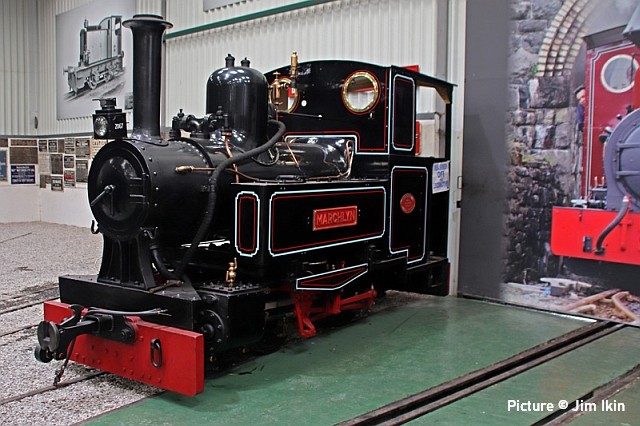
Penrhyn Avonside Machlyn of 1933.
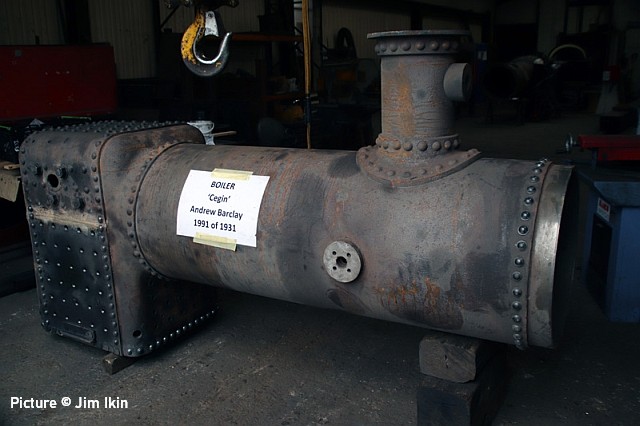
The boiler of ex Penrhyn Barclay Cegin.
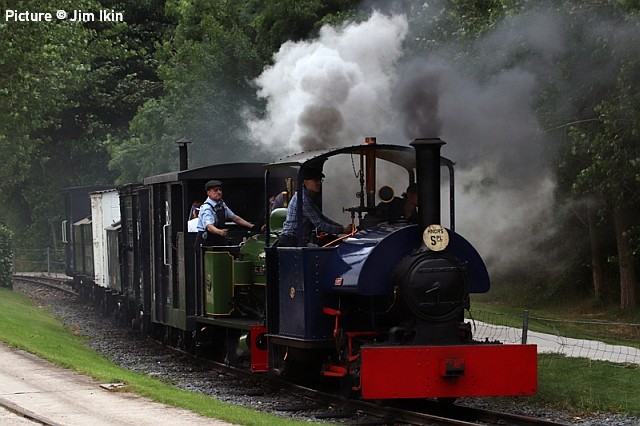
Bagnall Wendy of 1919 paired with new-build Jack Lane of 2005. Wendy worked in Blaenau Ffestiniog and Nantlle before being bought in the 1960s for £30. She has recently arrived from the Hampshire Narrow Gauge Trust.
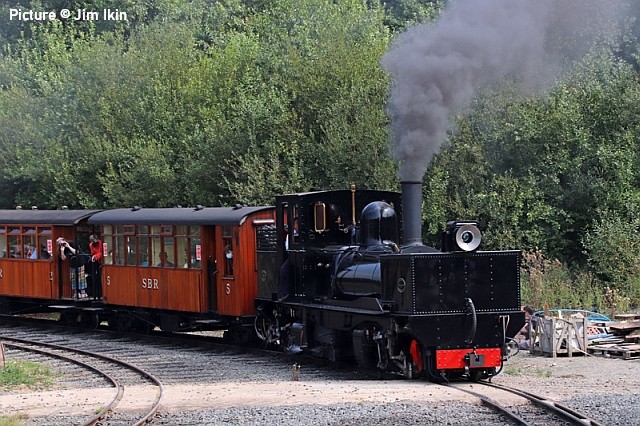
Tasmanian Railway Beyer-Garratt K1 of 1909 via the Welsh Highland Railway
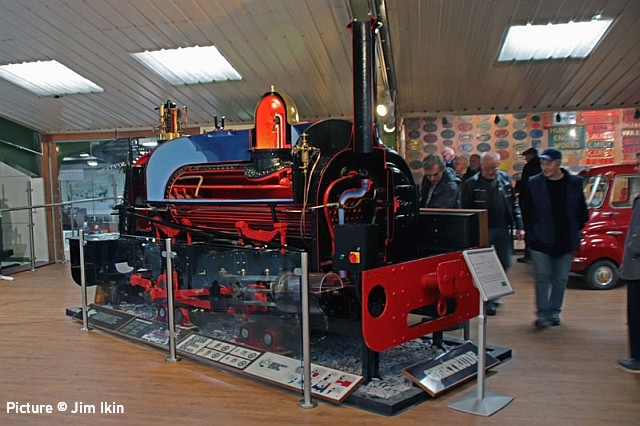
An image taken in 2019 (no face masks, but still in situ) sectioned ex Penrhyn Hunslet Gertrude of 1909.
From Dave Sallery's archive - a Euro-selection for the
Holiday
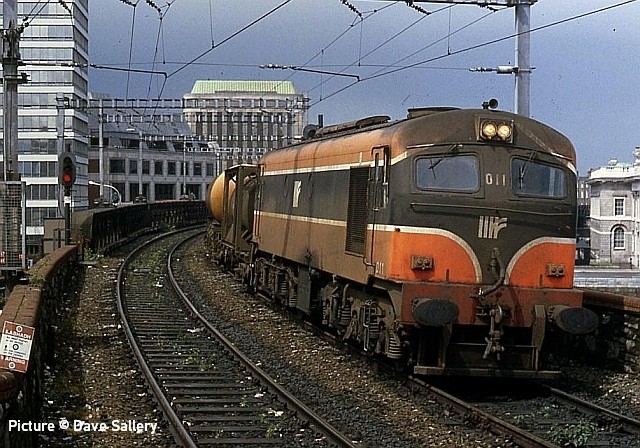
Irish Rail 011 crosses the River Liffey in Dublin on the Cork to Arklow ammonium tank train, 6 July 1994.
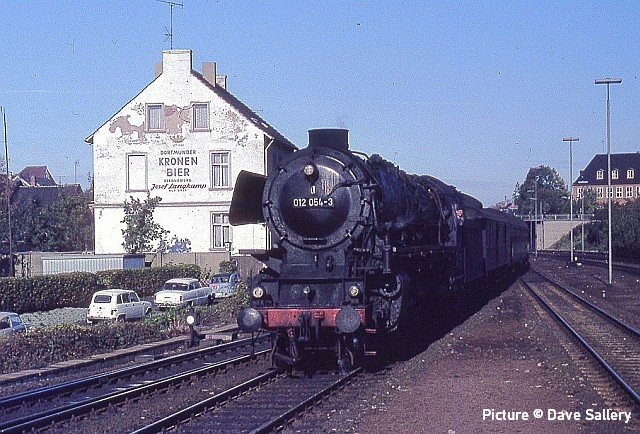
Oil burning pacific 012 054-3 entering Rheine on a semi-fast from Emden in 1971, one of the last DB steam passenger services.
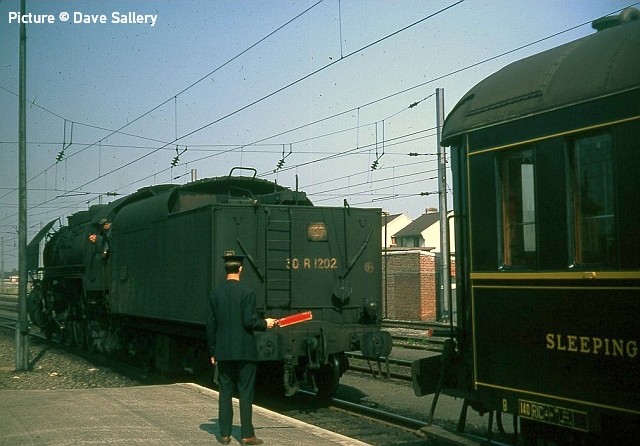
In 1967, SNCF 141R 2-8-2 backs onto the Basel - Calais train at Hazebrouck. This was the traction changeover point, as the overhead wires went to Dunkerque.
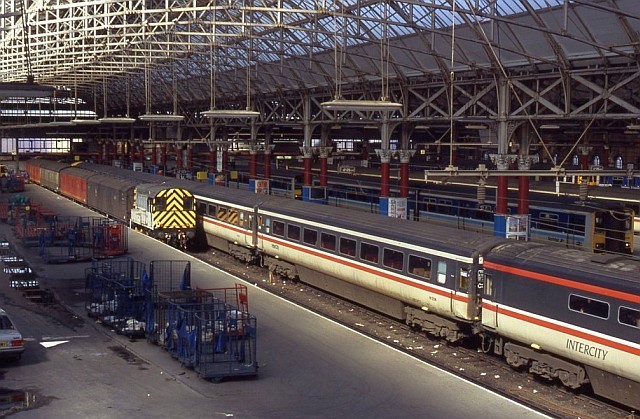
And back home: on 28 March 1990 08 915 shunts mail vans in the Age of Brutes (British Rail Universal Trolley Equipment) at Manchester Piccadilly.
North Wales Coast home page | Archive | Previous Notice Board